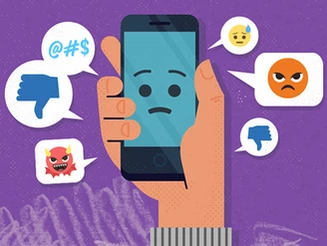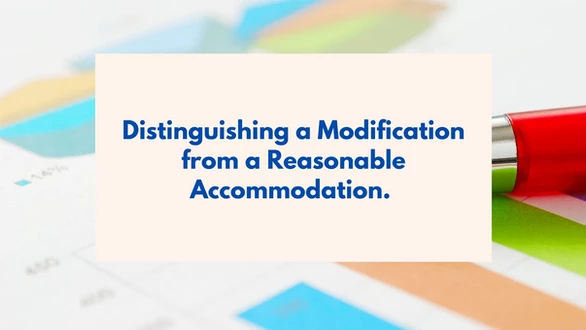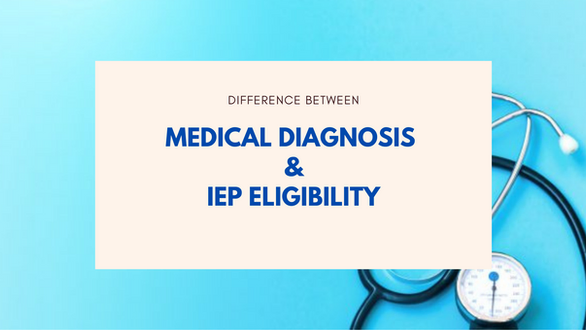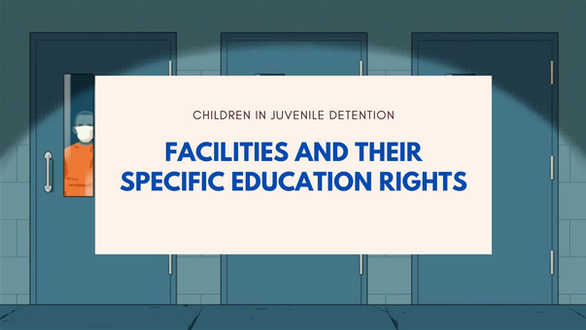Cyberbullying and harmful text messages, and how a school district can stop it
Special education laws exist such that students with disabilities must be accommodated to ensure that they receive a Free and Appropriate Public Education (FAPE), on a day-to-day basis as well as in extraneous situations such as bullying. Today bullying transcends the classroom and playground, as students continue to interact after school on their phones and computers, where cyberbullying and harmful text messaging have manifested. As is the case with cyberbullying, which takes place on social media sites, text bullying is a modern development that has become prominent with the advancement of technology and electronic communication. In other words, today’s students have at their disposal more subtle and creative ways of bullying others. Students with disabilities are evidently among the most vulnerable to experiencing problems with bullying, including these new, electronic-based forms. If your child is experiencing this type of bullying, it is important for you as parents to step in and work with the school district to stop the offender. This collaborative support is essential in properly addressing cyberbullying and text bullying. To be sure, the law requires school districts to prevent disability harassment and recognize their duty to address victims and offenders of text bullying, usually preteens and adolescents, in order to bring them to justice.
What is text bullying?
Text bullying can be defined as “sending mean, embarrassing, untrue, or hurtful messages to or about someone using a cell phone text messaging.” (1) This can also include messages that are sexual in nature and indicate sexual harassment. Text bullying is especially concerning because it can occur 24-hours a day, in any location the victim may be. Furthermore, because text bullies don’t have to see their victims face-to-face, they are inclined to behave more cruelly than normal. Text bullies also have the option to conceal their identity – by sending messages anonymously or from someone else’s phone, for example – which often causes additional fear in the victim. This form of bullying also proves unique as victims often respond by sending mean messages back to the offender, becoming bullies themselves. (2) Victims of text bullying will undoubtedly face challenges in attending school and keeping up with lessons, as the cruel messages they receive distract them and cause them to feel unsafe. Furthermore, if the victim is a special education student they already face a number of obstacles in succeeding in school, which will multiply as they experience bullying.
What can be done to respond to cyberbullying/text bullying?
While it seems sensible to tell a child or teen to ignore bullies, who feed off negative reactions, this advice is quite impossible to follow. With the existence of such platforms as text messaging and private and public messaging via social media sites, children are accustomed to the personal liberties of instantly reacting and voicing their opinions online. Ignoring a direct message has essentially become counterintuitive for today’s youth, which is why real action must be taken to stop cyberbullies and advocate for victims, who are often special education students. Being that bullying impedes educational success, especially for those with special education needs, it is the duty of the school district to take action in stopping text bullies. School districts must recognize their duty to address victims and offenders of text bullying, usually preteens in middle school, in order to bring them to justice.
Although most states have anti-bullying laws, these statutes generally do not contain language that explicitly grants private legal claims against a school district. In other words, when filing a lawsuit in state court parents will usually need to pursue a due process hearing based on common law causes of action or state and federal antidiscrimination laws, which are particularly useful for parents of a sprassment based on one’s disability – which is distinct from a situation in which aecial education student. (3) When a special education student is a victim of bullying, it can likely be considered disability harassment – that is, ha general education student is bullied.
Special education lawsuits filed under the IDEA can address monetary compensation for those families whose students have been denied FAPE but, due to the differences among state laws, it is much easier to sue the parents of bullies than it is to sue a school district. This is because government entities are protected against “lawsuits for harm caused by the negligence of public employees” because of their common law right known as “sovereign immunity.” (4) Cyberbullying further complicates this, as not all school districts have incorporated anti-bullying rules for those interactions that do not take place at school. Nonetheless, school personnel have a legal obligation to create a safe learning environment for all students and to accommodate special education students individually. As such, defendants in cyberbullying cases – special education or not – can overcome the obstacle of sovereign immunity and pursue a case in which school personnel will be held liable (by parents, and then by a judge) when they fail to adequately protect these students from the harm caused by cyberbullying. (5)
Lawsuits
Because state laws concerning bullying vary as they do, and because cyberbullying is such a new and complex issue, only in recent years have lawsuits been brought against school districts for negligence in dealing with cyberbullying specifically. In 2018 a student won $500,000 after suing her school in northeast Pennsylvania, and this was “the first time a court has held a Pennsylvania school district liable for student-on-student harassment.” (6) Although school districts had previously invoked the Pennsylvania Human Relations Act to assert that the law does not protect children from student-on-student bullying, a Philadelphia Common Pleas Court judge ordered the Philadelphia School District to pay Amanda Wible $500,000 in damages. She experienced bullying for the majority of time she was a student at this district, switching in and out of a few schools as a result. Before the lawsuit, her parents had decided to take her out of the school district and enrolled her in an online school program so that she could complete her secondary education in peace.
In Tuckahoe, New York, a middle school girl tried to commit suicide after experiencing years of bullying. Nearly a year later, in March of 2019, her parents filed a lawsuit against the school district, alleging that the school “took ineffective action to prevent bullying behavior” and “did not cease the bullying behavior under their duty to protect students.” (7) School safety reports, which tally violent incidents, different forms of harassment and cyberbullying, note similar allegations by another parent from the district. His daughter, Julianna Carraturo, commited suicide after she graduated from Tuckahoe High School. She was ruthlessly bullied in school and on social media, particularly on Snapchat, which erases messages after they’re opened. Mr. Carraturo did not file a lawsuit, but echoes and supports the pending case that was filed in March. Since then, the superintendent of the Tuckahoe School District Carl Albano announced that he will step down from his position at the end of the 2019-2020 school year. (8) Despite the accomplishments he saw during his three years as superintendent, the district’s record is heavily tainted by this rise in bullying culture during this time.
The state of Texas has been a leader in working to reduce bullying in schools. Remaining vigilant to the growing presence of cell phones, a coalition of teachers and parents drafted an anti-bullying bill that specifically addressed cyberbullying. In 2017 the Texas State Legislature passed David’s Law, which was named after a student who committed suicide as a result of being relentlessly bullied online. The first ever lawsuit based on David’s Law was filed in February of 2019. (9) On a social media site, middle school student D. Rothschild was named “most likely to shoot up the school” in a widely publicized poll, which was initially taken as a joke. Once rumors about Rothschild escalated, however, it became clear to his father that this was genuine cyberbullying. Mr. Rothschild pulled his son out of Tex Hill Middle School and prepared to sue the school district after he completed the district’s grievance process. He has alleged that although the school administration had stated that the rumors were not credible, the faculty contributed to his son’s bullying and ostracization as they searched him repeatedly and called in extra security. Furthermore, he claims that the school failed to offer his son any counseling after the bullying experience. As of February he has filed lawsuits against the bullies and parents of the bullies, and it is likely that he will sue the North East Independent School District as well, once the grievance procedures have been exhausted. (10) The family seeks $50,000 in damages and injunction.
Further actions that parents may consider taking in response to their child’s being bullied by a classmate include, for example, seeking help from the police and filing a restraining order. Parents of special education students may find a restraining order against their child’s bully especially useful, as they cannot be at school with their child to continuously provide protection and safety. Although providing this protection and safety during school hours is primarily the responsibility of the school, issues like cyberbullying present situations in which basic protocol is not sufficient. Filing a restraining order requires legal representation outside of the school but, once in place, the school personnel would have no choice but to enforce it, thus ensuring that the student will not come into contact with their bully.
Schools should also explore more assertive methods of responding to and discontinuing cyberbullying among students. If, for example, a student is identified as a cyberbully who is harassing their classmate(s), teachers might prohibit this student from using their cell phone during school hours, so as to restore the respectful and safe classroom dynamic. Unfortunately, schools cannot regulate what goes on outside of school in this same way. In many instances “schools may try to defend failures to address cyberbullying by arguing that they do not have the authority to regulate student speech that occurs off-campus during non-school activities.” (11) However, the 1965 landmark case Tinker v. Des Moines Independent Community School District established a basis for which this argument by schools has been rejected. The Supreme Court confirmed that schools cannot prohibit student speech unless it includes an expression of opinion that “would substantially interfere with the work of the school or impinge upon the rights of other students.” Cyberbullying among students undoubtedly creates this harmful situation that the Court described almost half a century ago, further supporting the idea that legal action is useful (and often necessary) in serving justice.
What happens when a special education student experiences cyberbullying?
Lawsuits based on disability harassment have usually been in response to workplace disputes, but legal action can also serve an important function in responding to an incident involving a special education student. Under the Individuals with Disabilities Education Act (IDEA), Section 504 of the Rehabilitation Act, Title IX of the Education Amendments Act of 1972, and Title II of the Americans with Disabilities Act (ADA), harassment based on disability is absolutely prohibited as a form of discrimination. (12) Despite the laws in place, parents of students with disabilities continue to report that bullying is one of their main concerns for their child’s experience in school.
In 2016, a 15-year-old student named Tristan was a victim of cyberbullying at his high school in Twin Cities, Minnesota. Tristan has autism and was also born with a rare disorder that rendered him legally blind. One of his bully’s cruel behavior crescendoed on the day that they took a full body photo of Tristan using the urinal, and the photo went viral. Amending the situation was fortunately not as difficult as it might have been in some other time or place. Tristan’s classmates stood up for him and pressured the main culprit to remove the inappropriate photo from the internet. School administrators responded immediately and conducted a full investigation. The culprit issued a formal apology in which he voiced his intense regret and desire to change his behavior for the better. The school district’s response illustrates one that appropriately treated the situation as an important wake-up call for the community, in that they must remain vigilant in promoting respectful behavior not just on school campus, but also online.
In a school setting “disability harassment constantly reinforces the message that the child with disabilities does not belong and that nothing he or she does can change that reality.” (13) This feeling will be further heightened by additional bullying that can take place on social media sites and in text messages. Any student could experience crippling anxiety about attending school if they are experiencing cyberbullying by their classmates, and coping with such emotions is even harder for a special education student. School districts have a “responsibility to respond to disability harassment, when it does occur, [which] includes taking prompt and effective action to end the harassment and prevent it from recurring and, where appropriate, remedying the effects on the student who was harassed.” In the common case that a special education student is a victim of bullying, parents also play an especially important role in gathering information about what their child is experiencing, and sharing this information with school personnel. Because “children with disabilities do not always realize that they are being bullied,” parents must facilitate open communication with their children so as to ensure that they provide complete and accurate details of the incidents.
Conclusion
The majority of special education laws were established before the rise of the technology from which cyberbullying and harmful text messaging have spawned; however, their implementation by school districts must evolve to incorporate all current forms of bullying. To ensure that parents, students, and school personnel are provided with the best and most accurate information on cyberbullying and text bullying, there should be continual updates and expansions of trainings, workshops, informational material, and other such tools. Schools and parents can collaborate to promote technology awareness, privacy protection, and anonymous reporting of cyberbullying, as they can actively create and support cyberbullying awareness programs for parents, and offer trainings for parents and students. (14) In addition, it is advisable for parents of special education students to talk to school personnel immediately if they suspect that their child is being bullied. Special education services such as an Individualized Educational Program (IEP) or a 504 Plan are great tools for creating a bullying intervention plan for a student with disabilities. School personnel that incorporate such an intervention plan into an IEP or 504 Plan are simply abiding by the law, despite any claim they may assert on the contrary.
As more public school families become aware of the legal protection to which they are entitled – particularly for their special education students – to address their children’s experiences with cyberbullying, more districts will be held accountable for upholding the law and remaining vigilant about student safety in the face of these modern forms of bullying. Legal actions that can facilitate this increase of school district accountability include Due Process hearings based on a common law cause of action or, when applicable, based on any violation of the distinctive anti-discrimination laws outlined in the legislation such as the ADA and the IDEA. Aside from these formal proceedings, parents and school personnel must be proactive and vigilant in identifying cyberbullying and assessing the best way to take care of the victim. Some parents may resort to filing a restraining order against a bully, or getting the police involved in another manner, as a way of preventing further abuse by this specific person. Parents of cyberbullying victims, especially when they are special education students, are entitled to respond in any way they deem necessary to maintain their children’s safety.
1.) “Text Bullying – Bullies That Use Text Messaging to Harass Others.” BullyingStatistics.org. 22 December 2009.
2.) Lavrentyeva, K., “Text Message Bullying: Responding to Aggression.” SafeLagoon.com. 4 August 2016.
3.) Parker and Waichman LLP, “Bullying and Cyberbullying Prompts Tragedy and Lawsuits.” YourLawyer.com. 20 November 2017
4.) Parker and Waichman LLP, “Bullying and Cyberbullying Prompts Tragedy and Lawsuits.” YourLawyer.com. 20 November 2017.
5.) Hazelden Foundation, “Litigation on Cyberbullying: Legal Issues for School Personnel.” ViolencePreventionNetworks.org. 2008.
6.) Graham, K.A. “Bullied in school, a Northeast Philly woman won a $500,000 judgment. Her case could ripple.” Inquirer.com. 27 October 2018.
7.) Eberhart, C., “Tuckahoe student bullied on school grounds, tried to commit suicide: lawsuit” Lohud.com. 12 April 2019.
8.) Eberhart, C, “Tuckahoe schools superintendent Albano.” Lohud.com. 7 June 2019.
9.) Martinez, M., “Bullies named his son ‘most likely to shoot up the school,’ Texas dad says in lawsuit.” Fort Worth Star- Telegram. 6 February 2019.
10.) Khoury, G., “First School Cyberbullying Case Under David’s Law.” Blogs.FindLaw.com. 8 February 2019.
11.) Kimmel, A. & Willard, N., “Cyberbullying, from Schoolhouse to Courthouse.” Justice.org. January 2018.
12.) Cantu, N.V. & Heumann, J.E., “Reminder of Responsibilities under Section 504 of the Rehabilitation Act of 1973 and Title II of the Americans with Disabilities Act.” U.S. Dept. of Education, Office of Civil Rights. 25 July 2000.
13.) Weber, M.C., “Disability Harassment in Public Schools.” William and Mary Law Review. February 2002.
14.) Spoede, J. & Reed, D., “Bullying & Cyberbullying: Update For Parents Of Students In Special Education.” EParent.com. 17 February 2016.











